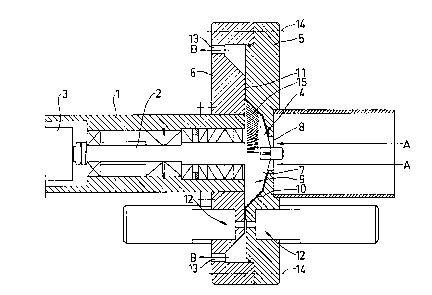Some of the information on this Web page has been provided by external sources. The Government of Canada is not responsible for the accuracy, reliability or currency of the information supplied by external sources. Users wishing to rely upon this information should consult directly with the source of the information. Content provided by external sources is not subject to official languages, privacy and accessibility requirements.
Any discrepancies in the text and image of the Claims and Abstract are due to differing posting times. Text of the Claims and Abstract are posted:
| (12) Patent: | (11) CA 1336546 |
|---|---|
| (21) Application Number: | 1336546 |
| (54) English Title: | METHOD AND APPARATUS FOR PREPARING A SUSPENSION FOR MEASUREMENT |
| (54) French Title: | METHODE ET APPAREIL DESTINES A LA PRESENTATION D'UNE SUSPENSION DEVANT ETRE MESUREE |
| Status: | Expired and beyond the Period of Reversal |
| (51) International Patent Classification (IPC): |
|
|---|---|
| (72) Inventors : |
|
| (73) Owners : |
|
| (71) Applicants : |
|
| (74) Agent: | GOWLING WLG (CANADA) LLP |
| (74) Associate agent: | |
| (45) Issued: | 1995-08-08 |
| (22) Filed Date: | 1988-12-30 |
| Availability of licence: | N/A |
| Dedicated to the Public: | N/A |
| (25) Language of filing: | English |
| Patent Cooperation Treaty (PCT): | No |
|---|
| (30) Application Priority Data: | None |
|---|
Method and apparatus for preparing a suspension for sample taking in a
measurement section formed as a gap. The suspension provided with
energy in a gap (10) immediately preceding the measurement section (11),
which is enabled by the gap (10) being formed between a part (9) of a
rotational body (4) and a part (5) surrounding it. These parts (9,5)
are movable in relation to each other.
Note: Claims are shown in the official language in which they were submitted.
Note: Descriptions are shown in the official language in which they were submitted.

2024-08-01:As part of the Next Generation Patents (NGP) transition, the Canadian Patents Database (CPD) now contains a more detailed Event History, which replicates the Event Log of our new back-office solution.
Please note that "Inactive:" events refers to events no longer in use in our new back-office solution.
For a clearer understanding of the status of the application/patent presented on this page, the site Disclaimer , as well as the definitions for Patent , Event History , Maintenance Fee and Payment History should be consulted.
| Description | Date |
|---|---|
| Inactive: IPC expired | 2024-01-01 |
| Inactive: IPC from MCD | 2006-03-11 |
| Inactive: IPC from MCD | 2006-03-11 |
| Inactive: IPC from MCD | 2006-03-11 |
| Inactive: IPC from MCD | 2006-03-11 |
| Time Limit for Reversal Expired | 2001-08-08 |
| Letter Sent | 2000-08-08 |
| Grant by Issuance | 1995-08-08 |
There is no abandonment history.
| Fee Type | Anniversary Year | Due Date | Paid Date |
|---|---|---|---|
| MF (category 1, 2nd anniv.) - standard | 1997-08-08 | 1997-06-27 | |
| MF (category 1, 3rd anniv.) - standard | 1998-08-10 | 1998-07-10 | |
| MF (category 1, 4th anniv.) - standard | 1999-08-09 | 1999-07-13 |
Note: Records showing the ownership history in alphabetical order.
| Current Owners on Record |
|---|
| STFI |
| Past Owners on Record |
|---|
| PETER SODERLING |